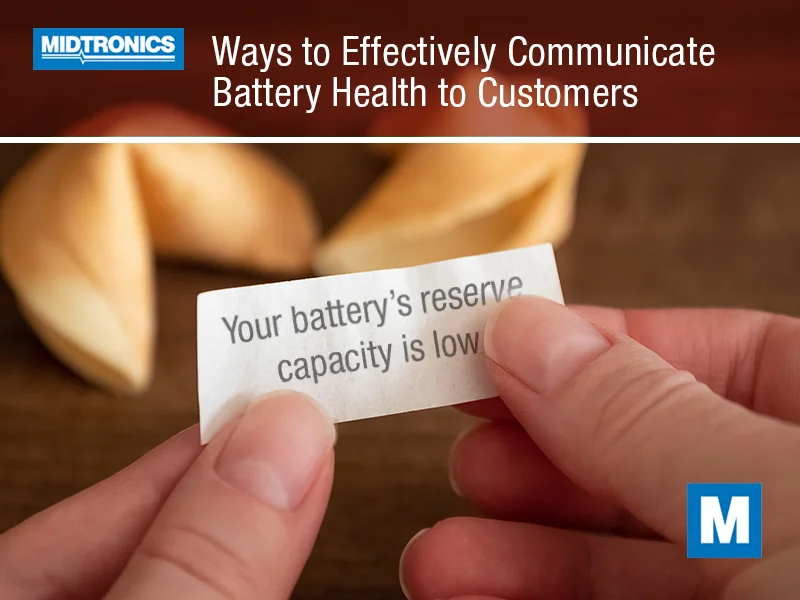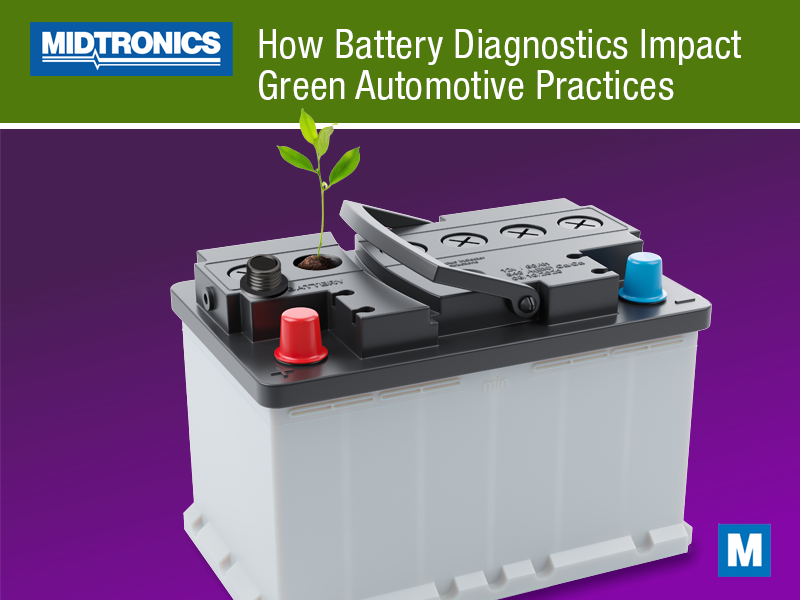In the realm of automotive care, the health of a car battery often flies under the radar until it’s too late. It seems car owners either believe their battery is 100% healthy, or they’re convinced it’s failed and ready for replacement. There’s a vast expanse of middle ground, though, but vehicle owners need to be educated about it in relatable terms. For service advisors and other automotive professionals, bridging the gap between technical car battery knowledge and effective customer communication is essential.
But what does that look like in real terms? Mentioning broad generalizations like a ‘good battery’ or a failed battery’ might be accurate, but it might not provide customers with the knowledge they need to make a decision. This guide breaks down the ins and outs of conveying common terms of car battery health in a manner that’s informative, relatable, and most importantly, enlightening to your clients.
Why Communicating About Car Battery Health is So Important
With a policy of testing the battery on every vehicle that passes through your service drive, it can be easily taken for granted that everyone knows what’s being checked and why it’s important. But for many vehicle owners, that’s not the case. And when you present the results of the test, they might not get a clear picture of their battery’s health and how it applies to them. Providing a clear explanation is vital for a few other reasons too.
It’s Often Overlooked for Maintenance
Despite its pivotal role in a vehicle’s operation, a car battery’s maintenance is frequently overlooked. Many car owners don’t realize its importance until they’re stranded on the roadside with battery failure. By proactively discussing battery health, service professionals can prevent such scenarios, emphasizing the importance of a replacement battery before it’s leaving the owner stranded.
It’s an Opportunity to Establish Trust with the Car Owner
Effective communication about battery health fosters a transparent relationship between service professionals and car owners. Explaining the state of their battery in an understandable way can elevate confidence in your services and establish a foundation of trust.
It’s the Most Common Reason for Roadside Assistance Calls
With battery issues topping the list of roadside assistance calls, explaining its importance and deciphering terminology to your clients cannot be understated. Educating them on these terms underscores the necessity of battery maintenance and encourages them to be more diligent with servicing, pushing for more proactive vehicle care that keeps their cars off the hook.
So, then, what are ways you can help them better understand battery health?
Relate State of Charge to a Full Cup
As professionals, it’s widely known that a full state of charge is when the voltage is 12.6 to 12.7 volts. However, this is quite easily misunderstood by a lay car owner who doesn’t realize that 12.0 V is considered a fully discharged battery, not 0 V.
One of the most effective ways to explain the concept of a battery’s state of charge is through the analogy of a full cup. Consider the battery as a cup of energy. Over time, energy is sipped away (through use) until it’s gone, and the cup (battery) needs refilling (recharging). The cup is full when it’s 12.6 V or higher, and empty at 12.0 V. Even more important, a failing battery may not be able to hold a full charge anymore. This imagery can help customers visualize why and how a battery depletes and the significance of keeping it charged.
Equate Charge Acceptance with the Opening in a Bottle
After a battery is partially discharged in, for example, a starting event, it needs to be recharged. That’s a commonly understood principle by car owners, but many don’t understand how long it can take to top up the depleted portion. A healthy battery might only take 90 seconds or so, but a weak or failing one can take much longer.
Relate it to the difference between filling a water glass and filling a water bottle. The opening for a water glass – the analogy of a healthy battery – is wide and can accept a relatively fast charge. The water bottle – representing the weaker battery – has a smaller opening and takes longer to fill up or replenish. When battery tests reveal al ‘Replace Battery’ decision, charge acceptance is often an issue.
Paint a Picture of What Battery Degradation Looks Like Internally
To further demystify car battery health, explain what happens to a battery internally over time. This time, analogies aren’t necessary if it’s explained well.
First explain that the lead plates can experience sulfation, a principle where particles build up on the plates inside the cells and prevent ions from easily flowing back and forth. If an analogy is warranted, it’s like an energy traffic jam.
Then, let them know that natural degradation occurs with time and usage, and particles settle to the bottom of the case. These particles, of course, can’t participate in the charge and discharge cycles anymore, weakening the battery. And when it’s advanced, it can bridge the negative and positive plates and cause an internal short.
This imagery can help car owners grasp the concept of battery degradation and the inevitable need for replacement.
Conclusion
Effectively communicating car battery health to customers is not just about translating technical jargon into layman’s terms. It’s about creating a shared understanding of the importance of battery care in vehicle management. By leveraging simple, relatable analogies, and better explaining what’s happening internally, automotive service professionals can enlighten and empower vehicle owners to take proactive steps towards battery maintenance.
Remember, a client well-informed about their battery’s health is more likely to appreciate the value of your service and return when their vehicle needs attending to. In the end, the goal is to ensure that your clients leave not just with a vehicle in prime condition, but with the knowledge and trust that will bring them back to your shop for years to come.




